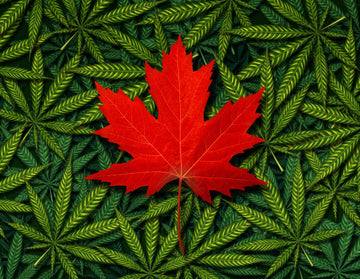As marijuana becomes increasingly integrated into cultural norms, an intriguing question emerges: How does marijuana effect exercise? This question may appear to be irrational right away. The stereotypical image of a marijuana user does not capture the essence of true wellbeing. Nonetheless, episodic evidence and emerging logical exploration suggest there is more going on behind the scenes.
In this blog, we will go further into the current discussion regarding marijuana's relationship with exercise. We'll look into what it means for motivation, execution, recovery, and the perception of pain and exertion throughout active work. From the anticipated benefits of various types of exercises to the challenges they offer, this post intends to provide a balanced perspective, revealing insight into a topic that remains controversial and under-explored. Whether you're a wellness enthusiast looking to incorporate marijuana into your regimen or are fascinated by the broader implications of its legalization, join us as we explore this green scene.
Cannabis And Motivation
For years, psychologists and medical professionals have conducted extensive research on the relationship between cannabis usage and motivation. These research produce varied results, with some suggesting that cannabis can reduce user motivation. The stereotype of the "lazy stoner" partially supports this idea, citing evidence of dopamine levels falling with extended exposure to marijuana in areas of the brain that are directly linked to motivation and reward.
Other study reveals a more complicated picture, indicating that impacts on motivation may vary depending on user characteristics, frequency of usage, and overall response to the event. While some users believe that cannabis usage increases imagination and creativity, others argue that such effects are subjective.
The reality is likely to be more open, with a genuine understanding that, while marijuana may be a depressant for some, particularly those who use it in large doses, it may also inspire creativity or even provide a different way of motivation for others. This diversity, however, underlines the importance of taking individual circumstances into account when assessing the relationship between marijuana and motivation.
Effects On Exercise Performance
Studies on the relationship between marijuana use and physical exercise are relatively recent and have mixed findings. On the one hand, marijuana's analgesic (pain-killing) effects make exercising easier and allow workouts to last longer since they lessen muscle soreness and tension both during and after a workout. Some people may even decide to incorporate physical activity into their daily routines more frequently as a result of this.
Meanwhile, studies have shown that marijuana negatively impacts reflexes, coordination, and aerobic capacity—all of which are necessary for physical health during a variety of sports and exercise activities. The main psychoactive ingredient in marijuana, THC, has the ability to distort perception, judgment, and bodily balance. As a result, performance in sports requiring high intensity or precision may be affected. The desire for cardiovascular exercise, which raises blood pressure and heart rate, is another factor to take into account.
Marijuana And Recovery
The topic of marijuana recovery following exercise is becoming increasingly prominent among fitness enthusiasts and sportsmen. Studies and user reports suggest that certain of the active components in marijuana, such as CBD, have health advantages beyond the decrease of inflammation, pain in the muscles, and enhancement of sleep—these are the main elements involved in rehabilitation. For those who struggle with chronic pain and discomfort that comes after exercise, THC, another chemical found in marijuana, is a bonus.
However, you must be mindful and cautious about this so that it is not overdone. When it comes to marijuana's medicinal application in the treatment of rehabilitation, its efficacy and safety among individuals may fall far short of one another, and legality can sometimes play a role. For individuals who wish to incorporate marijuana into their rehabilitation plan, one of the most important things to do is find a reliable online pot dispensary in Canada.
A dispensary that guarantees the way of using medical marijuana for recovery purposes is one that only offers the best and highest quality goods while keeping customers safe. Therefore, when it comes to marijuana and its potential for rehabilitation, it is important to use it responsibly, regulate its dosage according to personal needs, and obtain it lawfully in order to maximize benefits and minimize hazards.
Challenges And Risks
First off, there are a variety of ways that marijuana use might damage cognitive abilities and exercise, which could have an impact on a person's entire lifestyle and level of exercise. It can be enhanced by including the likelihood that an individual may develop dependency. This is typically the result of regular use of high-THC strains. Legally speaking, many users may find it more difficult to acquire and consume cannabis products due to the constantly evolving legislation in many jurisdictions. Furthermore, not all situations will result in the same effects of marijuana on exercise performance and recovery due to the influence of secondary factors including dosage, time, and specific physiology.
These complications draw attention to the need of purchasing cannabis online for recreational use from a reputable supplier that ensures the product's quality and legality while also lowering potential health risks associated with impurities and inaccurate THC/CBD level tests.
Case Studies And Anecdotes Regarding Marijuana Usage
1. The Midnight Snackers Marathon: After getting the munchies around midnight, one person claimed to have ran their fastest 5-kilometer race ever. They hit the track rather than raiding the fridge, demonstrating that inspiration can come from the most unexpected places.
2. Yoga Highs and Lows: A practitioner reported feeling more flexible and able to perform positions they had never been able to do sober. The drawback? Additionally, some dozed off in the Savasana pose and awoke well after the lesson was over.
3. The Disoriented Hiker: Some pals decided that using marijuana would improve their walk through the wilderness. They realized they had been going in circles after spending three hours gazing at the same "incredible tree."









